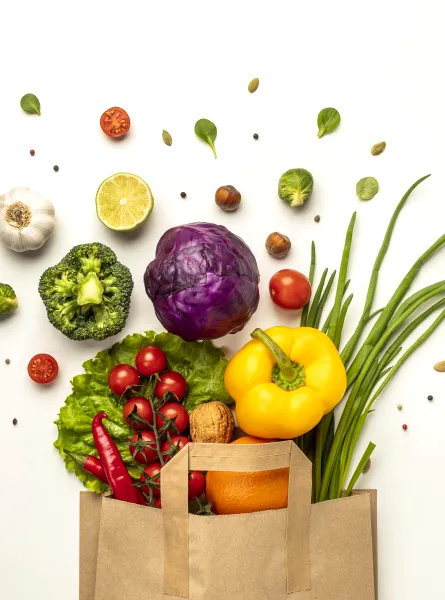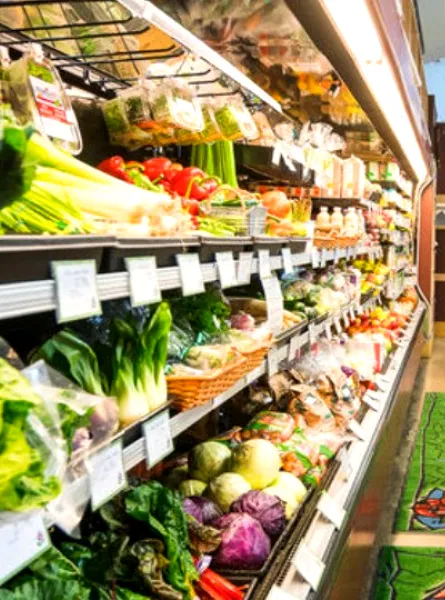
Summer is the perfect time to enjoy fresh, local fruits and vegetables. In addition to being delicious, these foods are rich in essential nutrients and contribute to a balanced diet. In this article, we will present the benefits of consuming local products and how to easily integrate them into your daily meals.
Why Choose Local Fruits and Vegetables?
1. Freshness and Flavour
Local fruits and vegetables are often harvested at maturity, meaning they are fresher and more flavourful than imported ones. Local produce travels a shorter distance to reach your plate, preserving its nutritional and taste quality (1).
2. Reduced Environmental Impact
By choosing local fruits and vegetables, you reduce your carbon footprint. Less transportation means less pollution and energy consumption. Additionally, it supports local farmers and contributes to the local economy.
3. Variety
Consuming seasonal products allows you to naturally vary your diet and benefit from the best prices. Seasonal fruits and vegetables are generally cheaper because they are available in large quantities.
Fruits
Strawberries
Available from late June, strawberries are perfect for desserts, smoothies, and even vinaigrettes. The best time to enjoy local strawberries is from late June to mid-July. Strawberry bark is a perfect snack to make with this small fruit (2).
Raspberries
Harvested in July, raspberries add a sweet and tangy touch to your jams, salads, and desserts like these oatmeal cookies. The best time to enjoy local raspberries is from mid-July to mid-August (2).
Blueberries
Available from mid-July to late August, blueberries are rich in antioxidants and perfect for oatmeal or snacks like our protein clusters. The best time to enjoy local blueberries is from mid-July to late August (2).
Melons
Cantaloupe, watermelon, and Montreal melon are summer essentials, hydrating and refreshing. The best time to enjoy local melons is from mid-July to late August (2). For a revitalizing drink, try our no-sugar-added watermelon lemonade.
Vegetables
Carrots
Crunchy and sweet, carrots are excellent raw as a snack, grated in salads, and even in smoothies. The best time to enjoy local carrots is from mid-July to November (2).
Tomatoes
Rich in vitamins and minerals, tomatoes are ideal for salads, sauces, and wraps. The best time to enjoy local tomatoes is from mid-July to mid-September (2).
Cucumbers
Refreshing and hydrating, cucumbers are perfect in salads or as a snack accompanied by a source of protein like these salmon rolls. The best time to enjoy local cucumbers is from July to September (2).
Zucchini
Versatile, zucchini can be grilled, roasted in an air fryer, incorporated into pasta dishes, or muffins. The best time to enjoy local zucchini is from July to September (2).
Peppers
Rich in vitamins A and C, peppers add colour and flavour to your dishes. Local peppers are mainly available from July to October (2). Try the recipe for rosemary vegetables, Jerusalem artichoke puree, and lemon sauce, perfect for incorporating peppers into your summer dinners.
Benefits of Consuming More Fruits and Vegetables
1. Improved Digestion
Fruits and vegetables are rich in fibre, which helps regulate bowel movements and prevent constipation (3).
2. Anti-inflammatory Benefits
Fruits and vegetables contain antioxidants and bioactive compounds with potential anti-inflammatory properties. These substances may help reduce inflammation in the body, contributing to the prevention of various inflammatory diseases (4).
3. Reduced Risk of Chronic Diseases
A high consumption of fruits and vegetables is associated with a reduced risk of chronic diseases such as cardiovascular disease, type 2 diabetes, and certain types of cancer (3).
Ready to incorporate more fruits and vegetables into your diet?
Enjoy the freshness and nutritional benefits of these vegetables by consuming them during their local season. For personalized advice on healthy and seasonal eating, make an appointment with a registered dietitian nutritionist from TeamNutrition today.
References
- Merle, A., & Piotrowski, M. (2011). Consommer des produits alimentaires locaux - Comment et pourquoi. https://www.researchgate.net/publication/254418143_Consommer_des_produits_alimentaires_locaux_-_Comment_et_pourquoi
- Mangez Québec. (n.d.). Calendrier des arrivages. Consulté le 20 juin 2024. https://mangezquebec.com/calendrier-des-arrivages
- Dahl, W. J., & Stewart, M. L. (2013). Position of the Academy of Nutrition and Dietetics: Health Implications of Dietary Fiber. Journal of the Academy of Nutrition and Dietetics, 113(8), 1046-1051. doi: 10.1016/j.jand.2013.06.001. https://www.ncbi.nlm.nih.gov/pmc/articles/PMC3649719/.
- González, R., Ballesteros, N., & Peniche, L. (2017). Current applications of natural fiber composites in automotive industry. Critical Reviews in Food Science and Nutrition, 57(13), 2863-2871. doi:10.1080/10408398.2016.1251390. https://www.tandfonline.com/doi/full/10.1080/10408398.2016.1251390.






